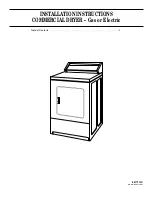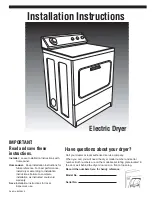
Programming IDEC SmartRelay
3.8 Configuring additional functions for IDEC SmartRelay
IDEC SmartRelay Manual
98
7. Move the cursor to the B5 block and then press O . IDEC SmartRelay shows the following
display:
ou can see that there is a network digital input NI1 connected at the first input of B5.
The following views are examples of network digital and analog outputs in IDEC SmartRelay:
Available network input/output blocks in indLGC
The following network I/O blocks are available for you to create your circuit program in
indLGC:
Network digital inputs: NI1 to NI64
Network analog inputs: NAI1 to NAI32
Network digital outputs: N 1 to N 64
Network analog outputs: NA 1 to NA 16
3.8.5
Changing IDEC SmartRelay to master/slave mode
IDEC SmartRelay provides a menu command for network communication settings. This
section shows you how to change IDEC SmartRelay s network communication mode.
An IDEC SmartRelay works in either master or slave communication mode.
Master mode versus slave mode
An IDEC SmartRelay in master mode supports client-server communication with other FL1F
devices across Ethernet. This IDEC SmartRelay can additionally act as a master to
communicate with one or more FL1F devices in slave mode.
An IDEC SmartRelay in slave mode functions as an expansion module. IDEC SmartRelay
slave devices do not re uire a circuit program. A master IDEC SmartRelay can read one or
more slave IDEC SmartRelay s digital/analog input/output values and write its own digital/
analog output values to these slaves. This helps IDEC SmartRelay achieve network I/O
expansion.
Note
An IDEC SmartRelay in slave mode can also have its own expansion modules. It also
supports a maximum of 24 digital inputs, 8 analog inputs, 20 digital outputs and 8 analog
outputs.
%
5
1,
2II'HOD\
4
3DU
14
14
%
1$4
1$4
%
Phone: 800.894.0412 - Fax: 888.723.4773 - Web: www.clrwtr.com - Email: [email protected]
















































